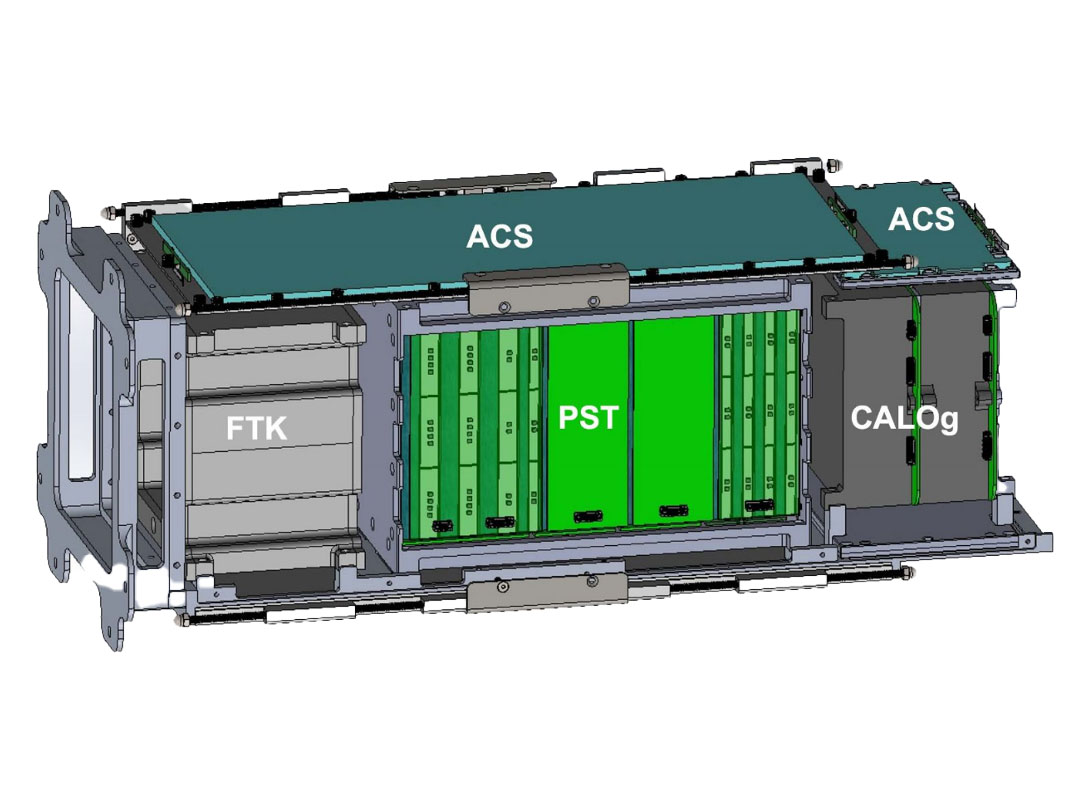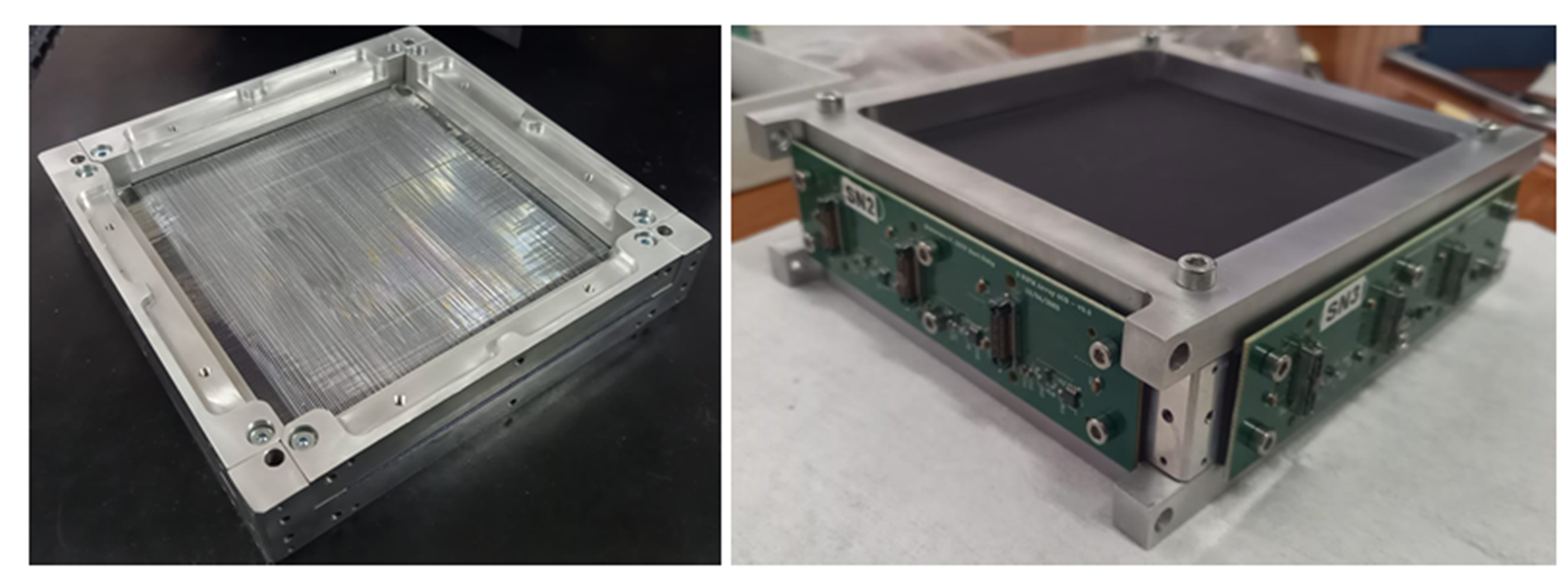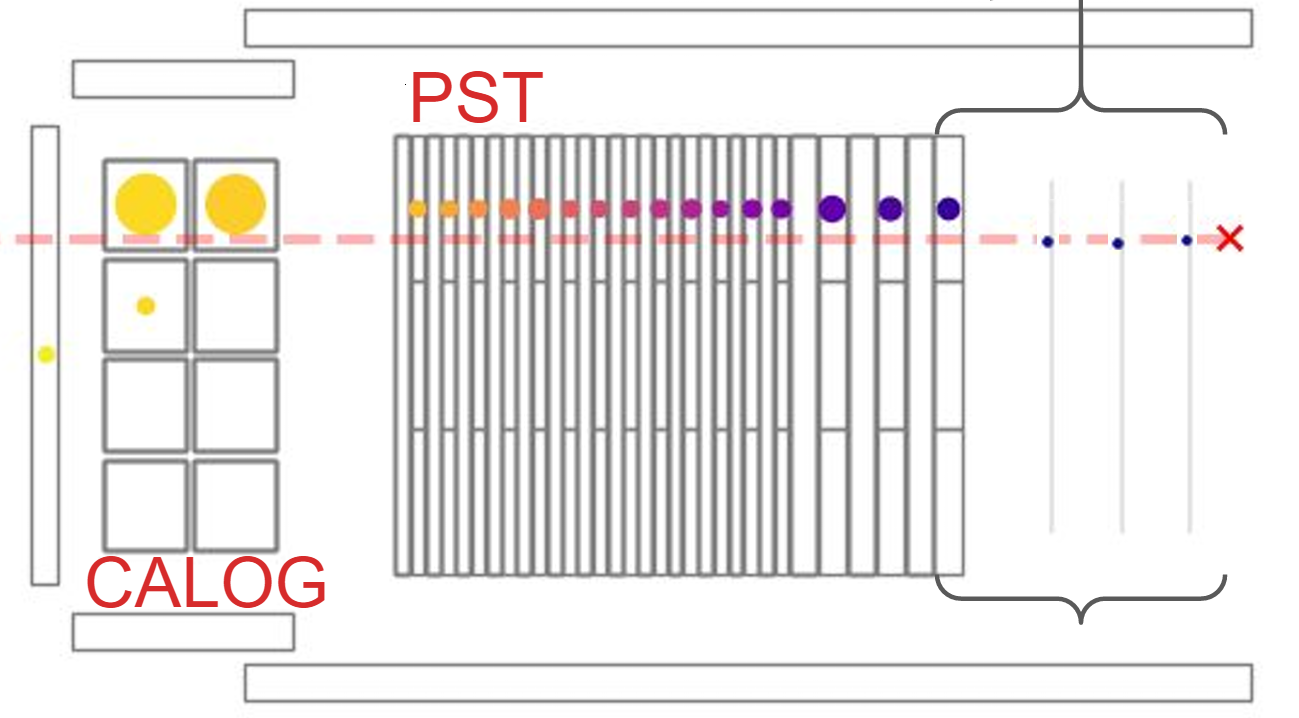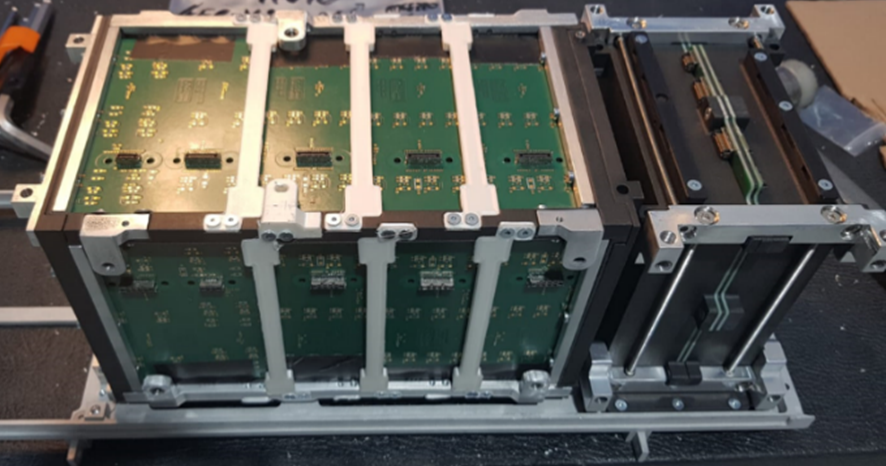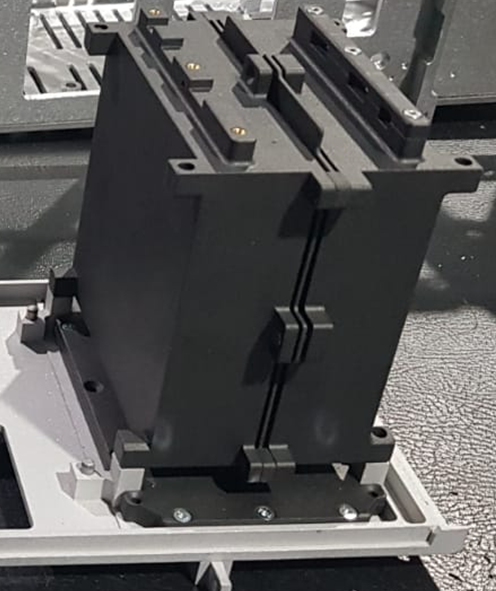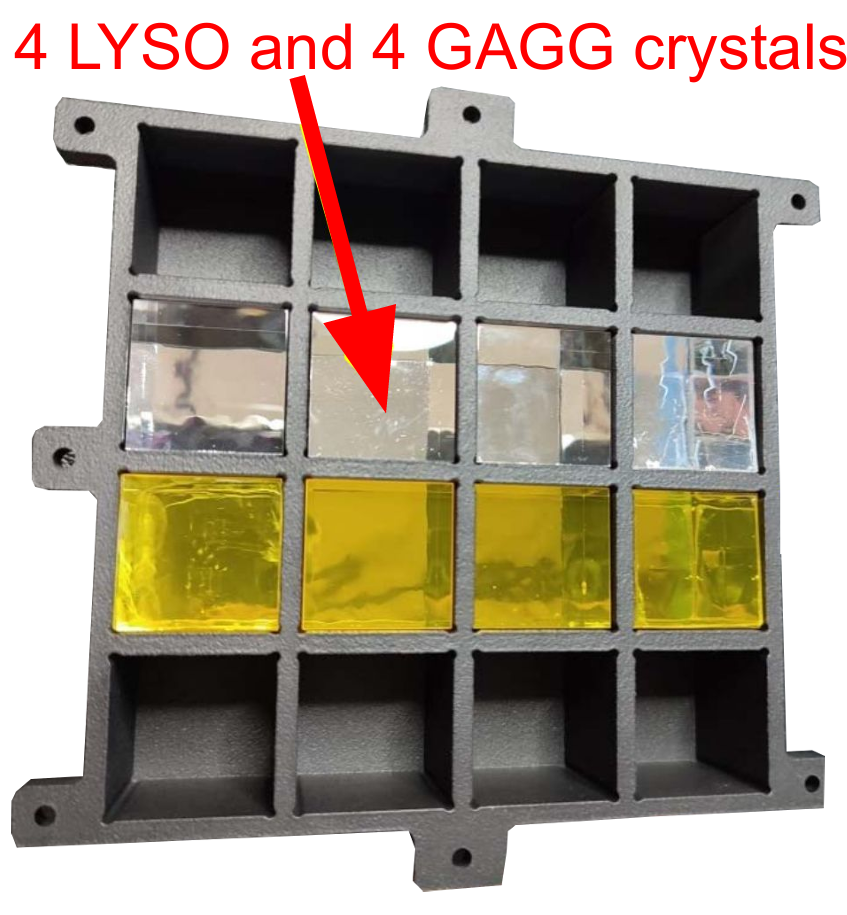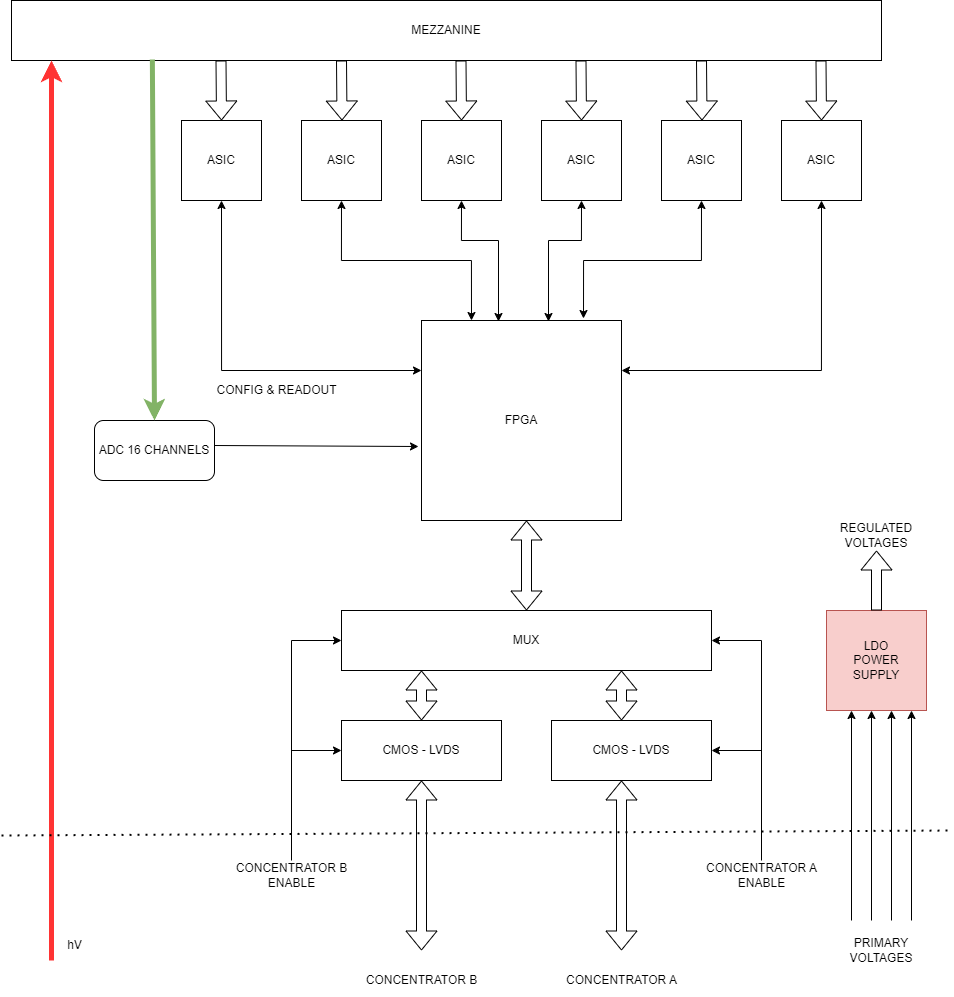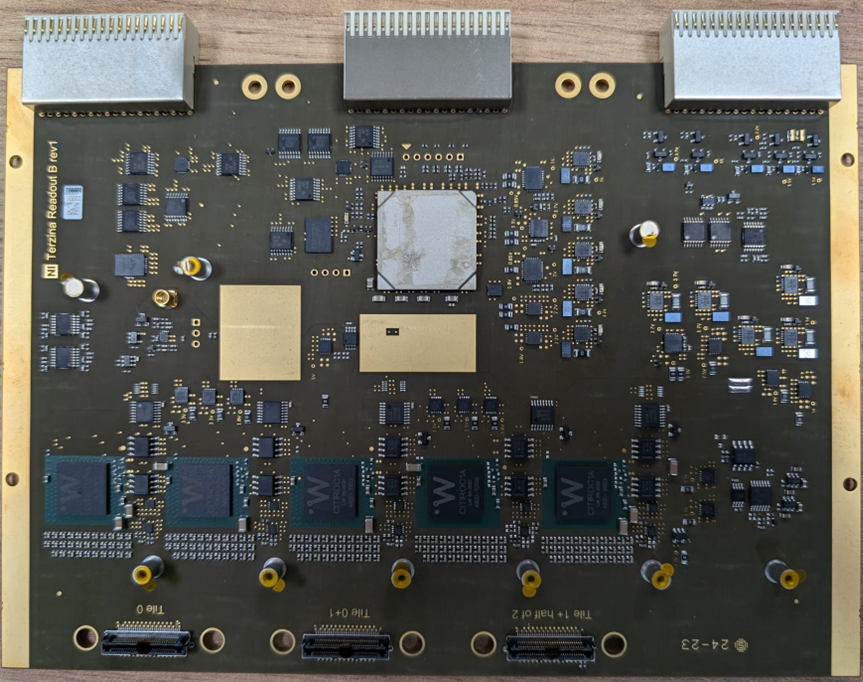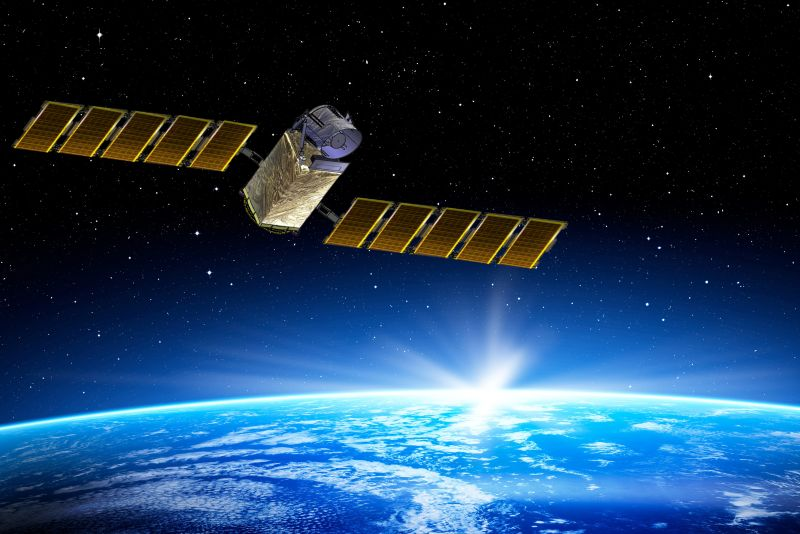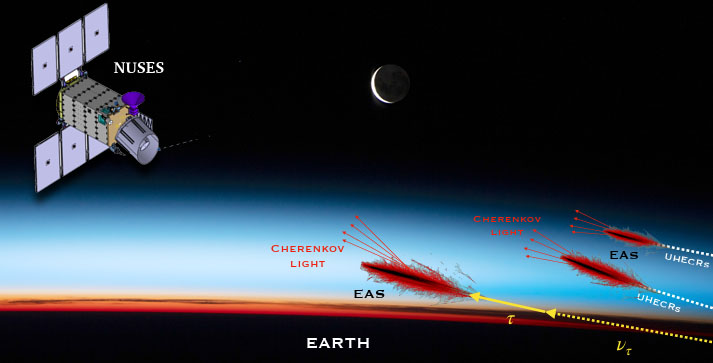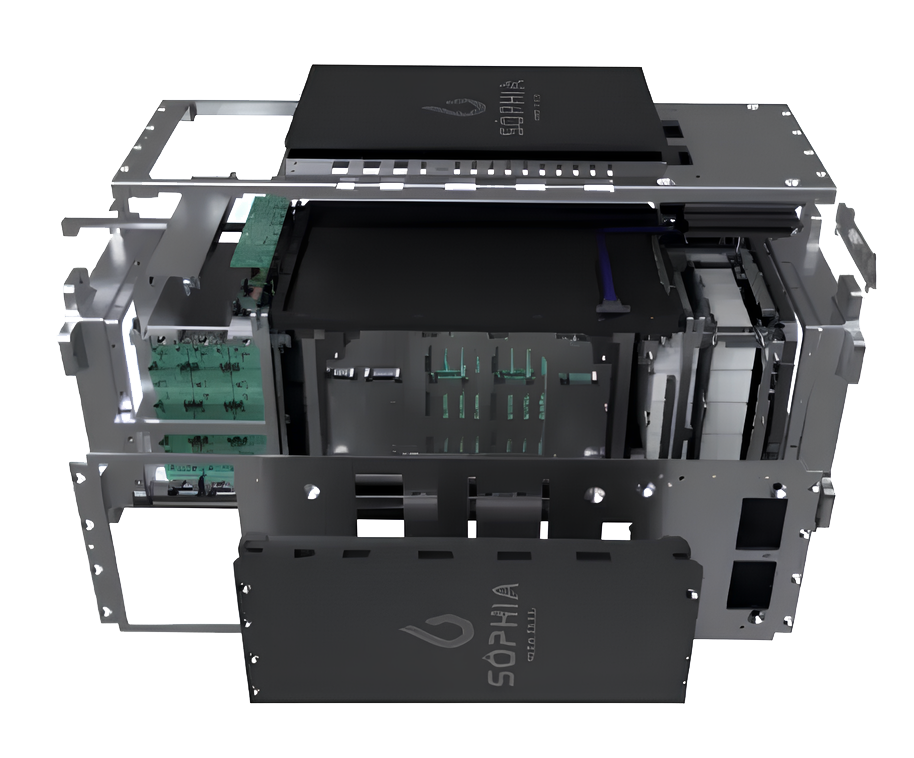
About the Project
Ziré is one of the two payloads aboard the Italian NUSES satellite, designed to detect low- and medium-energy cosmic rays and gamma rays. It integrates a Fiber Tracker, Plastic Scintillator Tower, gamma-ray calorimeter (CALOg), and an Anti-Coincidence System, all read out via SiPMs. Ziré enables 3D particle tracking, charge discrimination, and gamma-ray spectroscopy, serving as a technology pathfinder for future space-based astroparticle detectors.
-
Date
May 2025

Nuclear Instruments

GSSI - Gran Sasso Science Institute

INFN - Istituto Nazionale di Fisica Nucleare

Dipartimento di Fisica - Universitá di Trento

Gran Sasso Tech, L’Aquila
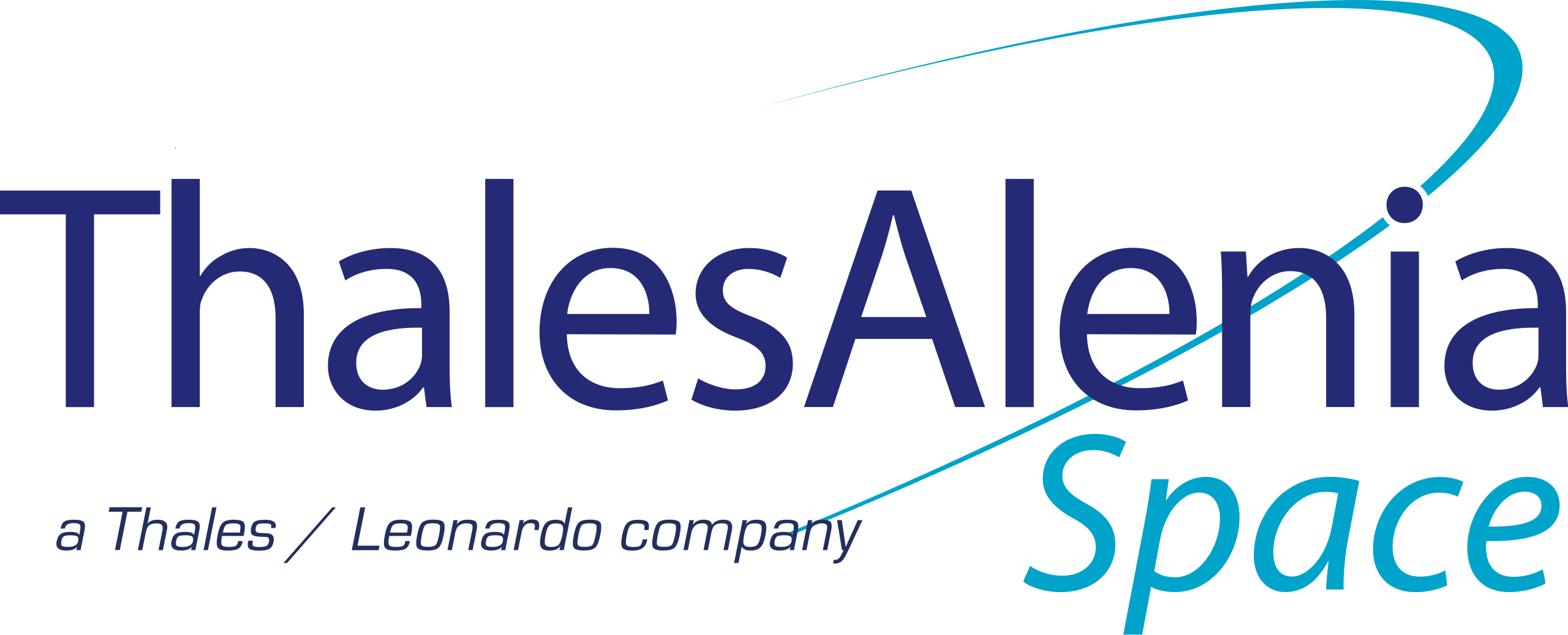
Thales Alenia Space
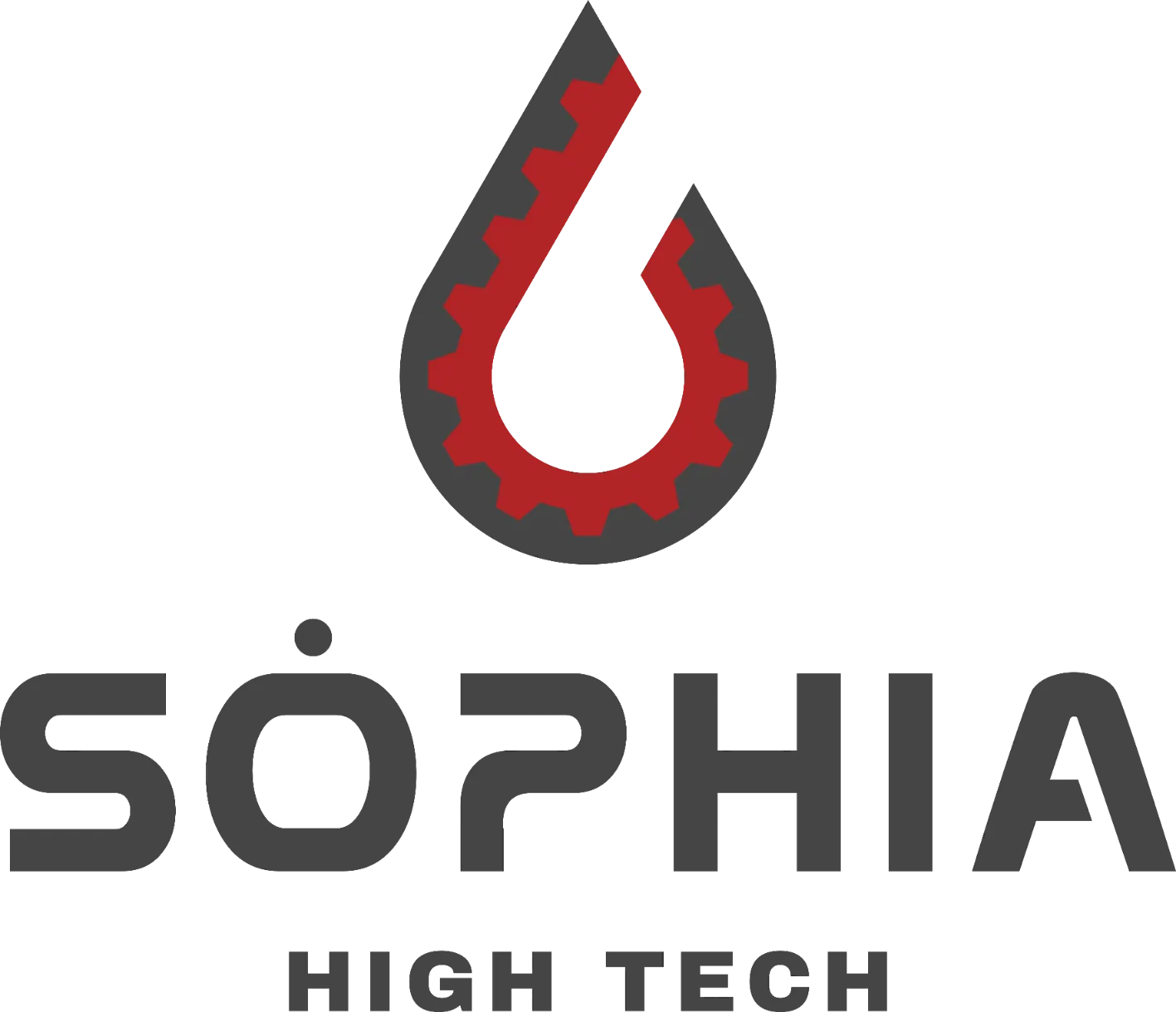
Sòphia High Tech S.r.l.

AGE Scientific SRL
Introduction: The NUSES Mission
The NUSES satellite is a pioneering space mission designed to explore the intersection of astroparticle physics and geophysics. Born from a collaboration between the Gran Sasso Science Institute (GSSI), INFN, the Italian Space Agency (ASI), and Thales Alenia Space Italy, it aims to validate new technologies for detecting cosmic rays, gamma rays, and signatures related to seismic and space weather events.
Our Contribution: DAQ Design, Firmware and Subsystem Integration
Nuclear Instruments has designed, developed, and space-qualified the full DAQ architecture of the Zirè payload, ensuring its robust performance in orbit as part of the NUSES mission. Our key contributions include:
- Custom design and production of DAQ boards for both the FTK (Fiber Tracker) and PST (Plastic Scintillator Tower), featuring Citiroc-based front-ends, high-speed ADCs, and Artix-7 FPGAs
- Development of dedicated firmware, managing:
- Real-time trigger logic
- Citiroc acquisition sequencing and analog readout timing
- Calibration procedures and test signal injection
- Housekeeping monitoring for temperature, voltage, and current
- Implementation of radiation protection mechanisms, including anti-latchup circuits, watchdog timers, and current-limited power switches
- Integration of the Zirè DAQ subsystem into the satellite, covering protocol interfacing, signal routing, power management, and mechanical layout
- Support for onboard calibration routines, enabling in-flight gain tuning and diagnostic verification across all detection layers
Fiber Tracker (FTK)
The Fiber Tracker (FTK) is the first detection layer encountered by charged particles entering the instrument from space. It consists of three X–Y modules, each built from two orthogonal planes of double-layer polystyrene scintillating fibers. The fibers have a square cross-section of 1 mm² and are grouped into modules measuring 9.6 × 9.6 cm², spaced at 2.5 cm intervals. This arrangement enables precise 2D hit localization per layer and 3D trajectory reconstruction across the entire tracker volume. The FTK is specifically designed to minimize Coulomb scattering and energy loss, thus preserving the quality of track reconstruction for low-energy particles.
The fibers are read out by Silicon Photomultipliers (SiPMs), ensuring compactness, low power consumption, and excellent timing resolution. By capturing the initial impact point and direction of incoming particles, the FTK allows the system to identify the entry angle and reject events not aligned with the instrument’s acceptance cone. It also acts as the first layer of a ∆E–E particle identification scheme, measuring the initial energy loss that can later be correlated with the energy deposited downstream in the calorimeter. In combination with the Plastic Scintillator Tower, the FTK enables Ziré to perform track-based energy reconstruction and charge discrimination.
Plastic Scintillator Tower (PST)
Positioned immediately beneath the FTK, the Plastic Scintillator Tower (PST) enhances Ziré’s tracking and particle identification capabilities. It consists of 32 layers of plastic scintillators, with the first six layers sized at 12 × 12 × 1 cm³ and the remaining layers thinned down to 0.5 cm to improve segmentation and containment resolution. The PST is primarily tasked with measuring the continuous energy loss (dE/dx) of particles as they traverse the stack, thus refining the energy profile initiated in the FTK.
The PST serves multiple roles. Firstly, it contributes to event containment analysis, enabling the firmware to distinguish between fully absorbed and crossing events. Secondly, it aids in time-of-flight measurements and background rejection. The signal from each layer is again read out by SiPMs, ensuring excellent linearity and robustness in space conditions. Simulations have shown that the PST can provide sufficient resolution to distinguish protons, electrons, and helium nuclei based on their characteristic energy deposition patterns across multiple layers. Furthermore, the PST plays a key role in trigger formation by ensuring that only particles with significant interaction in the detector volume initiate a full acquisition sequence.
CALOg – Gamma Calorimeter
The CALOg (Calorimetric Gamma detector) is located beneath the PST and represents the main energy absorber and identifier for gamma rays and high-energy charged particles. It is built from a 4 × 4 × 2 matrix of inorganic scintillating crystals, with each crystal measuring 2.5 × 2.5 × 3 cm³. Two scintillator materials have been evaluated and integrated: LYSO (Lutetium-Yttrium Oxyorthosilicate) and GAGG (Gadolinium Aluminum Gallium Garnet), both chosen for their high light yield, fast decay time, and radiation hardness.
The CALOg plays a pivotal role in gamma-ray spectroscopy. When a gamma photon enters the dedicated side or zenith-facing windows near the CALOg, it undergoes Compton scattering or pair production, depositing energy in the crystals. The resulting light is read by SiPMs, and the full energy deposition profile is reconstructed using a combination of summing algorithms and cluster analysis. Because of its depth and granularity, the CALOg can also detect and fully absorb electrons and positrons up to several tens of MeV, especially in conjunction with the PST and FTK data.
Preliminary simulations have shown that the CALOg offers a competitive effective area when compared to instruments like Fermi-GBM or CALET, particularly in the 0.1–50 MeV range. This makes it well-suited for the detection of gamma-ray bursts (GRBs) and persistent astrophysical sources. Moreover, its compact design and dual-orientation geometry allow for a wide field of view, enhancing the mission’s responsiveness to transient phenomena.
Anti-Coincidence System (ACS)
To suppress background signals and improve the purity of the events selected for downlink, Ziré is equipped with a dedicated Anti-Coincidence System (ACS). This subsystem consists of nine plastic scintillator tiles, each 0.5 cm thick, positioned to surround the lateral and rear faces of the CALOg and PST. The ACS is designed to veto particles entering the instrument from non-nominal directions, such as side-penetrating cosmic rays or secondary particles generated by spacecraft interactions.
Each tile is coupled to its own SiPM readout and is monitored in real-time by the FPGA. The system uses logical patterns to detect coincidence between ACS signals and subdetector hits; if a coincidence is observed, the event is flagged as background and either discarded or marked with a veto flag. The ACS is particularly important in reducing the false trigger rate during high-background regions, such as transits through the South Atlantic Anomaly (SAA).
This subsystem ensures that only well-contained and properly aligned events are analyzed further, significantly enhancing the signal-to-noise ratio of the scientific dataset. In addition, the ACS contributes to event topology reconstruction, allowing the firmware to classify events as “crossing,” “contained,” or “non-contained,” which is critical for downstream PID and physics analysis.

Picture of ACS (Anti-Coincidence) scintillator tiles
Picture of ACS (Anti-Coincidence) scintillator tiles
FTK and PST DAQ Boards: Architecture and Operation
The FTK (Fibre Tracker) and PST (Plastic Scintillator Tracker) subsystems in the ZIRE instrument onboard the NUSES satellite are each read out by custom acquisition boards that integrate multiple Citiroc ASICs, an FPGA, and a variety of support electronics for power regulation, calibration, and housekeeping.
Citiroc ASICs and Signal Processing
The Citiroc ASICs (developed by Weeroc) are at the heart of both the FTK and PST readout systems. These ASICs are designed to process analog signals from SiPM sensors, providing:
- Amplification and shaping of charge pulses via a dedicated analog front-end.
- Dual-gain chains, enabling both low-gain (LG) and high-gain (HG) signal paths for dynamic range extension.
- Peak-hold circuits that retain the maximum amplitude of each pulse per channel.
- Multiplexers that sequentially route these peak signals to external ADCs.
Signals from the LG and HG chains are digitized using dual 14-bit ADCs (AD7357B), operating at 5 MSPS. This ensures a complete charge readout from both gain paths in under 50 µs, maintaining integrity for event-by-event acquisition.
Board Composition and Modular Layout
- Each FTK board hosts 6 Citiroc ASICs, allowing readout of 192 channels. The selected FPGA is an Xilinx Artix-7 Ultrascale+ AU25P, offering the necessary I/O and logic capacity.
- PST boards, by contrast, are based on a Citiroc design and read 128 channels per board using 4 ASICs, providing additional redundancy via board duplication.
All boards are organized in a modular fashion, with a motherboard + passive mezzanine approach. The mezzanine boards carry only connectors, acting as routing layers that adapt the detector cabling to the ASIC layout, simplifying integration and improving flexibility across different detector geometries.
Communication with the Concentrator
Both FTK and PST boards interface with a central Concentrator Board via a common digital BUS architecture. This bus is protected and controlled using a system of buffers and multiplexers, which serve a dual function:
- Redundancy management: enabling selection between two concentrators.
- Fault isolation: protecting the local FPGA from potential short-circuits or logic faults on the concentrator side.
This architecture supports reliable, reconfigurable communication and fits the redundancy and reliability requirements for space-based instrumentation.
Anti-Latchup and Protection Mechanisms
Both board types integrate switches and current protections that act as anti-latchup circuitry. This is essential in space, where radiation-induced single event latchups (SELs) could otherwise jeopardize board functionality.
The goal is to ensure autonomous recovery from faults without requiring hardware resets or system reboots—critical for autonomous operation in orbit.
External Links
- The Ziré instrument onboard the NUSES space mission
- The Ziré instrument onboard the NUSES space mission - POSTER
- The NUSES space mission
- The light tracker based on scintillating fibers with SiPM readout of the Zire instrument on board the NUSES space mission
- The scintillating fiber tracker of the NUSES-Ziré pathfinder satellite
- A Compact Particle Detector for Space-Based Applications: Development of a Low-Energy Module (LEM) for the NUSES Space Mission
- A Silicon-Photo-Multiplier-Based Camera for the Terzina Telescope on Board the Neutrinos and Seismic Electromagnetic Signals Space Mission
- Development of plastic scintillators with SiPM readout for satellite-borne astroparticle physics experiments
- Il rivelatore Ziré a bordo della missione spaziale NUSES
- The Nuses satellite
- Terzina e Zirè alla scoperta del cosmo (RAI TG1)
